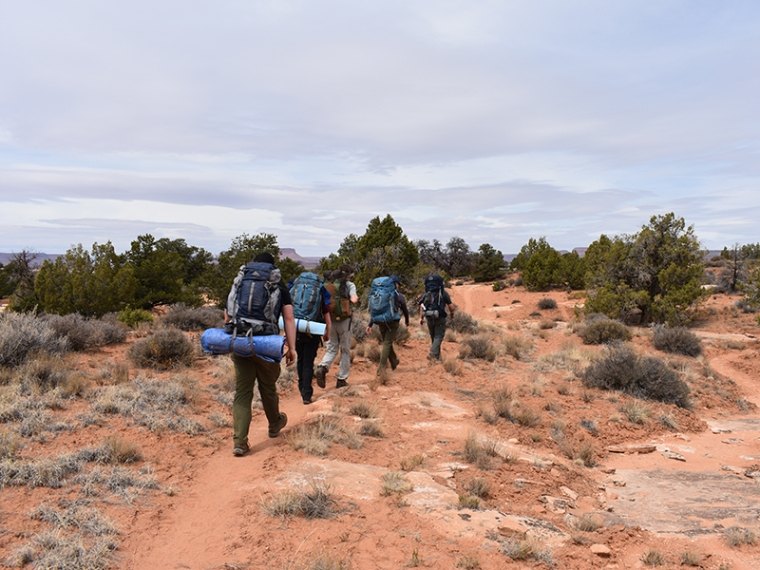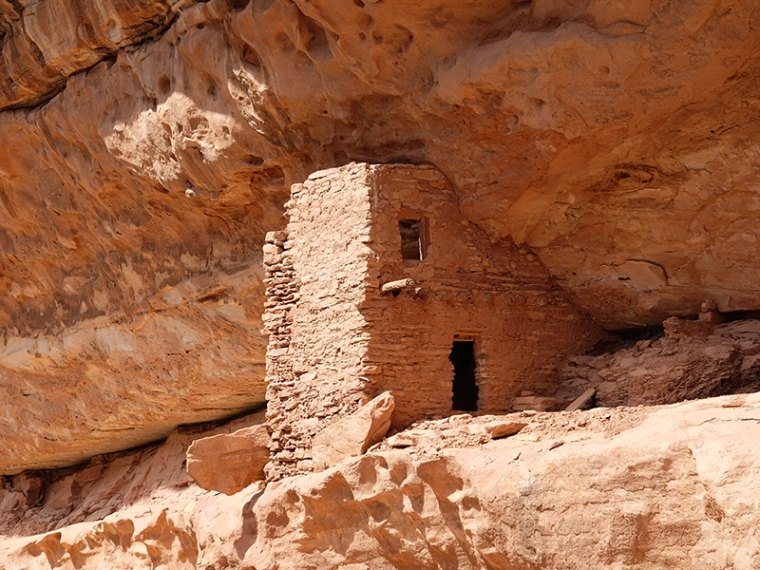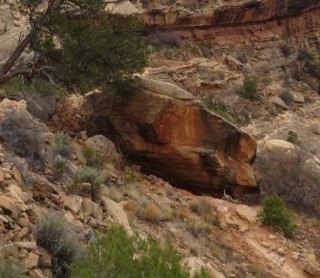By Lisa Krussow
As the leader of SWCA’s Salt Lake City field manager group, I’m always looking for ways to help develop our team and add to the experience for our cultural resources crew leaders. I work with the team to identify goals and initiatives that not only help us in our jobs with SWCA, but also our careers and life outside of work.
So last fall, when Ralph Burrillo, crew lead and assistant principal investigator, suggested a SWCA group backpacking trip in Grand Gulch, Utah, I jumped at the chance to use it as a team-building trip that could also benefit our clients.
Grand Gulch is an amazing canyon in southeast Utah that cuts through Cedar Mesa, an uninhabited 400-square-mile plateau. The canyon is currently considered part of the Grand Gulch Wilderness Study Area and is managed by the Bureau of Land Management (BLM). The Gulch is one of the most archaeologically rich areas in Utah, representing a full timeline of prehistoric use of the land from Archaic rock art to Basketmaker rock shelters and Pueblo III towers.
Prior to our trip, Ralph talked with the BLM and offered to document any vandalism that we encountered – a concern since visitation to the area has increased in recent years. He also informed them of our route, which involved descending through Polly’s Canyon and taking Bullet Canyon out rather than the far more popular Kane-Bullet route. Ralph and I were joined by program director Matt Edwards and field managers Kate Hovanes (assistant project manager- architecture) and Michael Skidmore (assistant crew lead).
Here’s a closer look at our trip and the lessons we learned:

DAY ONE: You can see the destination, but how do you get there?
Our legs are fresh and our energy is high as we briskly walk on the mesa top before descending into the canyon. Our backpacks represent aspects of our personalities, from the prepared and cautious folks with extra food, clothing, and more than enough safety gear; to the minimalists, with carefully rationed food and limits on extras (you can wear the same shirt for three days, right?). Already, team-building skills, such as analyzing individual strengths and knowledge that contribute to the group and assessing how people approach the problem of living out of a bag for three days, come into play.
Our first route plan didn’t work, so we took the traditional descent into Polly’s Canyon via the Government Trail. Not even halfway down we lost the trail. As a group, we decided to have Matt scout out a route to the west as we tried to piece together the trail. The trail was evidently one bench below.
This offered a handy analogy for a common problem with management and planning: you can see the end product, but how do you get there? Michael spotted a connecting route to the east and we followed him down. Matt made it down his own way, showing that there are multiple ways to approach a problem. We all agreed on our campsite for the night, set up camp, and then went to check out an amazing cultural site.
DAY TWO: Know when to slow down and prioritize
The second day tested our group, both physically and mentally. Not everyone pumped water from the stagnant hole we’d found near our campsite the night before, and priorities were laid out from the beginning with several members opting for water-for-coffee over water-for-food.
The lack of water drove all our decisions for the first half of the day. As the group revived with some food, the heat rose to 85 degrees, which was higher than any of us were used to in March. It was more than halfway through the day before we found a much-desired pool of water up a side canyon, which added nearly 14 miles to our day. The trail proved to be a sand slog, more evidence that this is the driest winter that Cedar Mesa has seen in recent years.
Lucky for us, the hardship brought out the good in the group. Evidence of team building kept popping up throughout the day with people offering water to those that had less, sharing food, helping one another across logs, and warning each other when the ground was unstable or when there were hanging branches.

DAY THREE: Working together lightens the burden
The final day started with an easy walk to the junction of Grand Gulch and Bullet Canyon. The trail was lightly packed from rain that had fallen the night before, and the route was relatively flat. We dropped our packs, took our water supplies, and ventured towards the Green Mask site and spring. Compared to the route the day before we were all happily trotting along feeling light, and full of energy and comradery. The site proved, again, to be amazing and something you will never see outside of Cedar Mesa, and we lingered until we realized we really needed to start our ascent. The trail continued to be much easier walking than the day before and we had time to play around the Jailhouse and Perfect Kiva sites, testing our skills bouldering up the route.
Ralph and Matt kept a faster pace up the trail, so we decided to have them split and complete the car shuttle, while the rest of us took it a little slower. As a smaller group, we tracked footprints and used trail cairns. I had some familiarity with the area and felt like we were on the right track by using landmarks. We spotted our shuttle vehicle still parked, so it turned out that we beat our speedy leaders who had marched right past the exit trail. After peeling off our boots, drinking some water, and sharing some food, we devised a safety plan in case they were lost. Luckily, we didn’t have to put our plan into action because after a few more minutes Ralph and Matt appeared.
All’s Well That Ends Well
Although this area has seen a huge increase in visitation since the 2016 national monument proclamation, we did not observe an increase in vandalism. Hopefully other visitors have been touched by the remarkable archaeology and are leaving it for future travelers.
For us, the trip provided an opportunity to experience a type of team-building that is difficult to achieve in the office. The things we learned were not all tangible, but we now have a common thread because of this experience in the Utah desert, seeing archaeology that would blow anyone’s mind, and being away from civilization’s distractions for a few days.
I’m already seeing the benefits play out within the walls of the office too, as we navigate projects and client problems and find new ways to work together more efficiently than ever before.
For more information about SWCA’s cultural resources services, contact Lisa Krussow at lkrussow [at] swca [dot] com (lkrussow[at]swca[dot]com).
